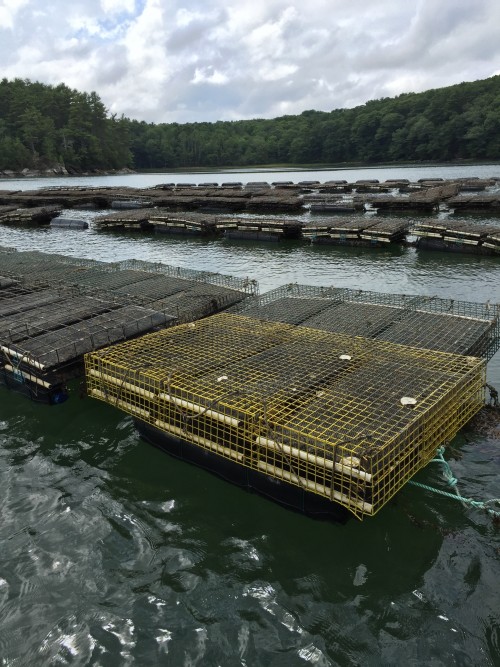
Ecological Methods to Prevent Biofouling of Aquaculture Infrastructure
Project Description
Marine biofouling on aquaculture infrastructure increases fuel and maintenance costs for the aquaculture industry. Current methods to prevent biofouling do not fully prevent organism attachment or use chemicals that are toxic to biofouling organisms as well as other marine life. New methods are needed to effectively prevent biofouling in an ecological manner. To address these issues, students are synthesizing coatings for aquaculture infrastructure to prevent biofouling. They are characterizing the coatings’ physical behavior and will eventually evaluate their biofouling prevention tendencies.
The first aspect of the project focuses on synthesizing amphiphilic brush block copolymers as coatings for ropes typically used in aquaculture. Protocols to synthesize amphiphilic brush polymers of that contain quaternary amine macromonomers. Functionalities to tether these polymers to surfaces are being developed. Subsequent work will assess the biofouling prevention capabilities of the coatings.
The second aspect of the research is developing hydrogel coatings that undergo controlled degradation to create a self-renewing hydrophilic surface that removes biofouling organisms attached to it. Researchers are developing formulations of cellulose derived hydrogels and quantifying their physical properties. A focus has been the investigation of how chemical crosslinking affects the stiffness of the hydrogels and the subsequent degradation. Students have been investigating incorporating quaternary amine containing polymers into the hydrogels to create a material that actively prevents organism adhesion.
For both aspects of the project, materials synthesis, chemical characterization, and physical property determination are ongoing. Anti-biofouling experiments with these materials are beginning. Subsequently, the focus will turn to the relationship between physical and chemical properties and biofouling mitigation.
Results and Accomplishments
Researchers have synthesized a new quaternary amine containing brush polymer, targeting new polymers to prevent biofouling and resulting in a poster presentation at a national conference. Researchers have gained a fundamental understanding of the polymerization equilibrium. This yielded a manuscript that is currently in revision. The research team also learned how to make hydrogels from naturally derived materials.
These results have provided a foundation to synthesize materials researchers can study, and have also provided a fundamental understanding of polymer synthesis as well as the relation of chemical structure to macroscopic material properties, enabling new materials in disciplines outside of biofouling prevention.
Summary of Data Being Collected
| Data | Type | Quantity | Location |
| Chemical characterization of polymers | Nuclear magnetic resonance spectra, infrared spectra, size exclusion chromatograms | One of each type for each molecule synthesized, 10’s of each type of data, collection ongoing | Gramlich Laboratory, UMaine |
| Physical characterization of polymers | Rheology data, dynamic mechanical analysis data, degradation | One of each type for each molecule synthesized, 10’s of each type of data, collection ongoing | Gramlich Laboratory, UMaine |

